Basics and Use Cases
What is a QR Code?
QR codes can store website addresses, contact details, information texts and much more. Discover how a QR code works and explore its applications across different industries.
Introduction
What is a QR code?
A QR code (short for “Quick Response Code”) is a two-dimensional code that stores information in a compact format and can be read by many devices.
Unlike traditional barcodes, QR codes can hold significantly more data. A standard QR code can store over 4,000 alphanumeric characters, making it suitable for web URLs, contact details, information texts, or product and batch data in industrial settings. Any device equipped with a camera and QR code reader software can be used to scan it.
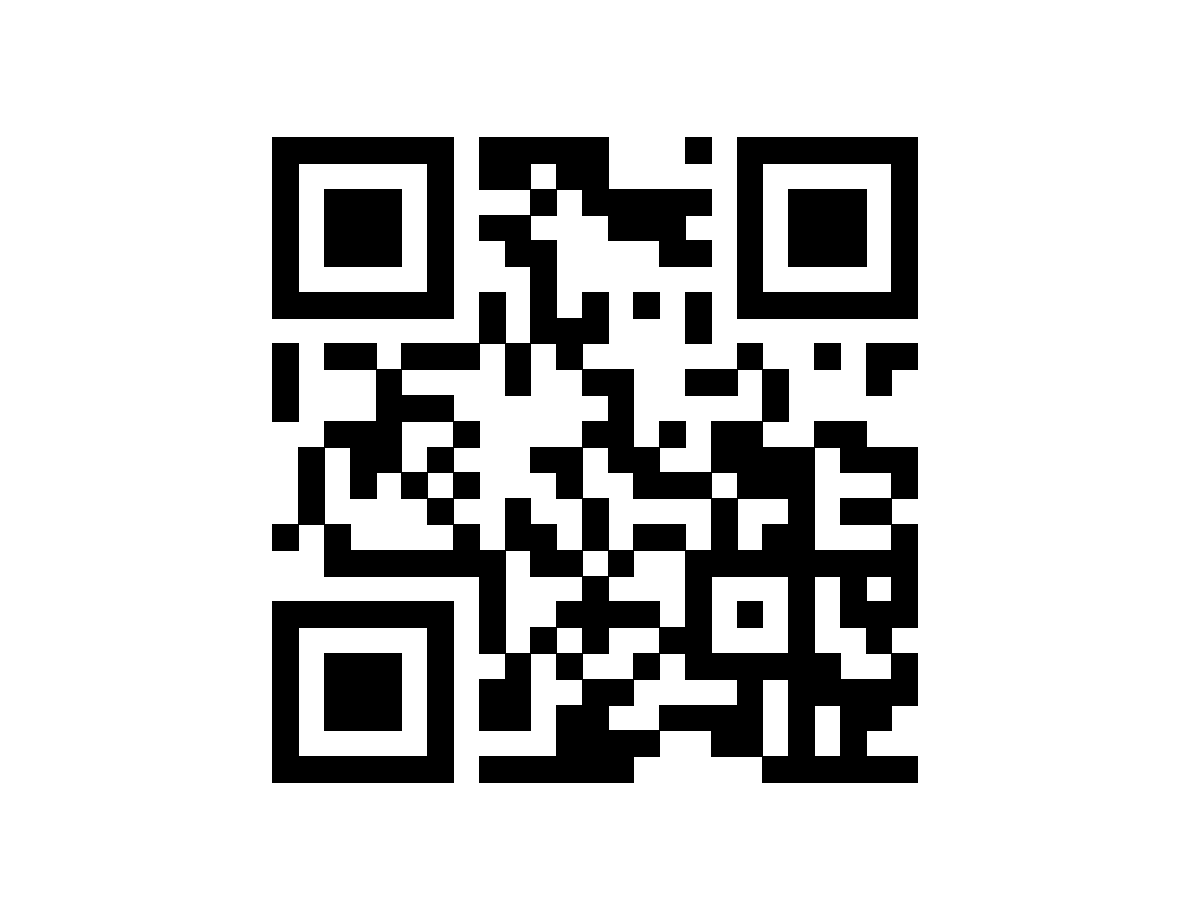
A QR code that leads to www.manubes.de.
One of the key features of QR codes is their high error tolerance: With the highest error correction level, up to 30% of the stored information can be restored, making QR codes particularly resistant to damage.
QR codes were first developed in 1994 by the Japanese company Denso Wave to label and identify components in automobile production. With the rise of smartphones, QR codes eventually became a popular way to share information, not just in industrial settings.
Basics
Structure of a QR code
QR codes are made up largely of a grid of black and white squares (“modules”). This structure is used to encode information in binary form.
The so-called “finder patterns” (the large squares in three of the four corners of the QR code) help scanners quickly detect the code and align it correctly. Smaller markings within the code (“alignment patterns”) ensure that the content can still be read accurately, even at an angle or if the code is slightly distorted.
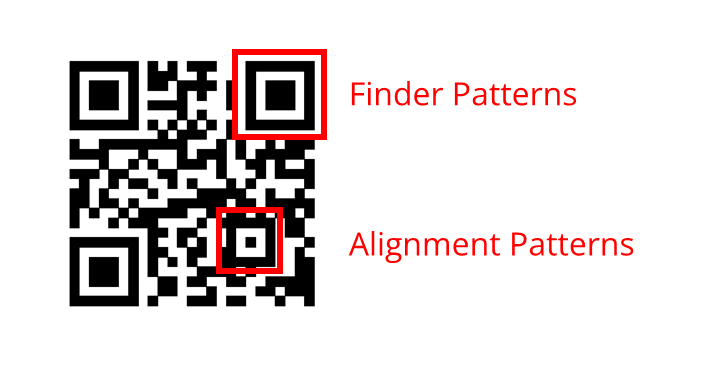
Lines between the finder patterns, made up of alternating black and white modules, define the grid and divide it evenly.
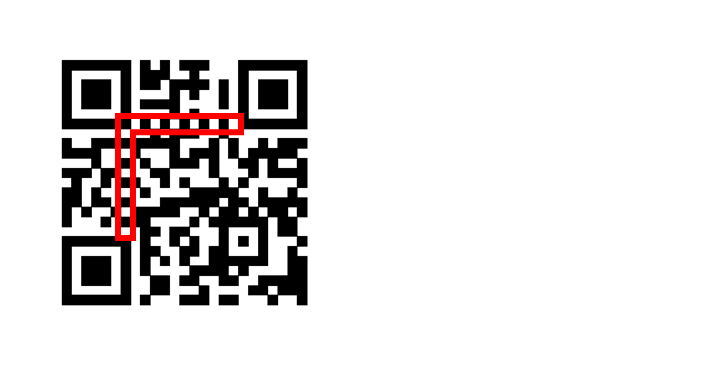
The grid of black and white modules contains the actual data along with additional redundancy information for error correction.
A white border called the “quiet zone” (at least four modules wide) frames the QR code to separate it from its surroundings.
Certain areas of the QR code are reserved for special information:
- Version information: Indicates the size of the grid
- Format information: Contains the error correction level and the masking pattern used
- Dark module: A single black square used as a reference point (always in the same position)
The size of a QR code depends on the amount of stored information and the chosen error correction level. A small QR code with just a few squares is usually enough for a web address, while longer texts or extensive datasets require larger grids.
A standard QR code has a minimum size of 21×21 modules and a maximum size of 177×177 modules.
The size is determined by the version number (1–40) using the following formula:
(Version number – 1) × 4 + 21
Thus, version 1 corresponds to 21×21 modules, while version 40 results in the maximum size of 177×177.
At 177×177 with the lowest error correction level, a QR code can hold up to 4,296 alphanumeric characters.
Error Correction
Error correction in QR codes ensures that information remains readable even if the code is partially damaged, dirty or poorly printed.
This is achieved through adding additional data redundancy: Alongside the actual content, the QR code also stores correction data, which is automatically used during scanning.
There are four different error correction levels, chosen depending on the application:
- Level L (Low): Restores about 7% of data, offers the highest storage capacity.
- Level M (Medium): Restores up to 15% of data, the standard for many applications.
- Level Q (Quartile): Restores up to 25% of data, often used in advertising or on packaging.
- Level H (High): Restores up to 30% of data, highly robust, suitable for industrial use or outdoor codes.
The choice of error correction level is a trade-off between data security and storage capacity: The higher the correction level, the less overall information can fit into a QR code.
Data Encoding
The actual information in a QR code – such as a web address, product number or text – is not stored directly as characters but translated into a binary format (0s and 1s). QR codes use different encoding modes depending on the type of data:
- Numeric: Digits only (0–9). Offers the highest data density and is the most space-efficient.
- Alphanumeric: Includes uppercase letters, digits and a limited set of special characters (e.g. $, %, +, -). Commonly used for product or serial numbers.
- Byte mode: Supports 8-bit characters, typically in UTF-8. Allows storage of text in almost any language.
- Kanji mode: Optimized for Japanese characters, originally developed for the Japanese market.
The data stream (bit sequence) includes the encoding mode indicator, the character count, the actual data bits, error correction information and additional padding bits.
A QR code can also combine multiple modes. For example, a product number (numeric) and a web address (alphanumeric) can be stored together in the same code.
Use Cases
Where are QR codes used?
Today, we encounter QR codes in many places:
- Marketing: Posters, packaging, brochures
- Retail: Price tags and product information
- Services: Digital menus, tickets
- Finance: Mobile payments
In addition to all the other appplications, QR codes continue to play an important role in the industry. Beyond their original use in material labeling, they are widely applied in warehouse and logistics management, order processing and production control.
QR codes in the industry – Examples
Tracking
of components
QR codes are printed directly onto parts, packaging or machine components or applied through laser engraving. They contain serial and batch numbers, enabling full traceability from raw materials to the finished product.
Material and
tool inspection
By scanning QR codes on raw materials and packaging, personnel can verify that the correct material is being used for the current job. Likewise, tools can be checked for approval and suitability.
Support for
maintenance staff
Codes on machines or tools link to digital maintenance schedules, inspection reports or spare parts lists. With a quick scan, service technicians can immediately access the relevant documentation.
Tracking
of components
QR codes are printed directly onto parts, packaging or machine components or applied through laser engraving. They contain serial and batch numbers, enabling full traceability from raw materials to the finished product.
Material and
tool inspection
By scanning QR codes on raw materials and packaging, personnel can verify that the correct material is being used for the current job. Likewise, tools can be checked for approval and suitability.
Support for
maintenance staff
Codes on machines or tools link to digital maintenance schedules, inspection reports or spare parts lists. With a quick scan, service technicians can immediately access the relevant documentation.
Tracking
of components
QR codes are printed directly onto parts, packaging or machine components or applied through laser engraving. They contain serial and batch numbers, enabling full traceability from raw materials to the finished product.
Material and
tool inspection
By scanning QR codes on raw materials and packaging, personnel can verify that the correct material is being used for the current job. Likewise, tools can be checked for approval and suitability.
Support for
maintenance staff
Codes on machines or tools link to digital maintenance schedules, inspection reports or spare parts lists. With a quick scan, service technicians can immediately access the relevant documentation.
Logistics and
inventory management
In internal logistics, QR codes support the automated tracking of storage locations, transport orders and shipments. This simplifies inventory management and speeds up material flows.
Production
control
By scanning QR codes on workpieces or at workstations, tasks such as transmitting job data or reserving equipment can be partially or fully automated.
After-Sales and
customer service
Manufacturers can place QR codes on machines or spare parts to give customers direct access to support portals, spare parts orders or service tickets. This speeds up communication and reduces the effort required in customer service.
Logistics and
inventory management
In internal logistics, QR codes support the automated tracking of storage locations, transport orders and shipments. This simplifies inventory management and speeds up material flows.
Production
control
By scanning QR codes on workpieces or at workstations, tasks such as transmitting job data or reserving equipment can be partially or fully automated.
After-Sales and
customer service
Manufacturers can place QR codes on machines or spare parts to give customers direct access to support portals, spare parts orders or service tickets. This speeds up communication and reduces the effort required in customer service.
Logistics and
inventory management
In internal logistics, QR codes support the automated tracking of storage locations, transport orders and shipments. This simplifies inventory management and speeds up material flows.
Production
control
By scanning QR codes on workpieces or at workstations, tasks such as transmitting job data or reserving equipment can be partially or fully automated.
After-Sales and
customer service
Manufacturers can place QR codes on machines or spare parts to give customers direct access to support portals, spare parts orders or service tickets. This speeds up communication and reduces the effort required in customer service.
Types
Other types of QR codes
The classic QR code has served as a basis for several other QR code variants that were developed to meet specific requirements:
- Greater data capacity
- Smaller space requirements
- Handling of sensitive data
- Custom designs
Micro QR Code
The Micro QR Code is a smaller variant designed for applications with very limited space, such as small components in manufacturing.
Its data capacity is limited (up to 35 digits or 21 alphanumeric characters) but sufficient for short numbers or IDs.
Unlike standard QR codes, Micro QR Codes have only one finder pattern in the top-left corner. Their size ranges from 11×11 to 17×17 modules.
Design QR Code
A Design QR Code allows the addition of graphic elements such as logos, colors and custom designs without losing its functionality.
This is made possible by taking advantage of the error correction mechanismn, which ensures the code can still be recognized by a scanner despite the added visual elements.
Design QR Codes are used primarily in marketing, in industrial contexts they play only a minor role.
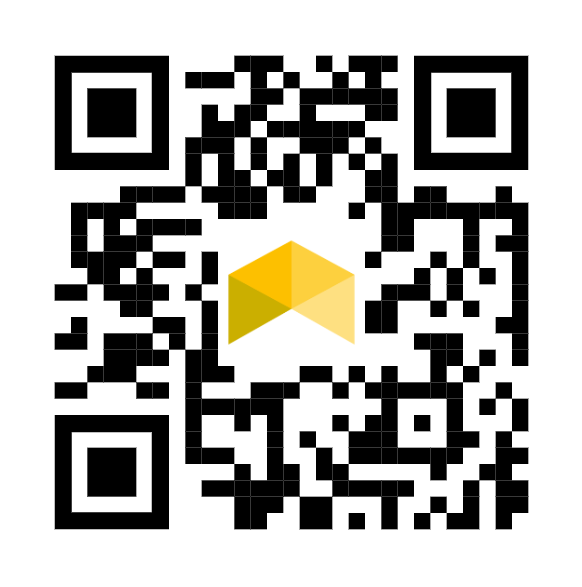
A Design QR Code with a logo in the middle.
Secure QR Code
Secure QR codes can contain both a public and an encrypted data section. The encrypted data can only be read by a device that has the corresponding key.
iQR Code
iQR codes are an advanced version that not only allow for much higher data density but can also be generated in rectangular shapes.
With a maximum size of 422×422 modules, they can store significantly more data than standard QR codes. In addition, they offer higher levels of error tolerance.
Static and dynamic QR codes
With regard to the content stored, a distinction can be made between static and dynamic QR codes.
Static QR codes encode fixed content such as text or a permanent website URL.
Dynamic QR codes point to a redirect URL that leads to a specific target URL. The target URL can later be updated. They also allow insights into usage, since visitor statistics of the redirect URL can be tracked and analyzed.
Implementation
Integration of QR codes in manufacturing
With manubes, you can integrate QR code scanning into your own applications to make production processes simpler, more efficient, and more secure.
- Verify materials with a quick scan to avoid costly mix-ups.
- Scan QR codes at workstations to instantly access the right dashboards and overviews.
- Provide maintenance-related information by placing QR codes on machines.
- Optimize internal logistics by marking pallets, containers, or storage locations and linking them to software systems.
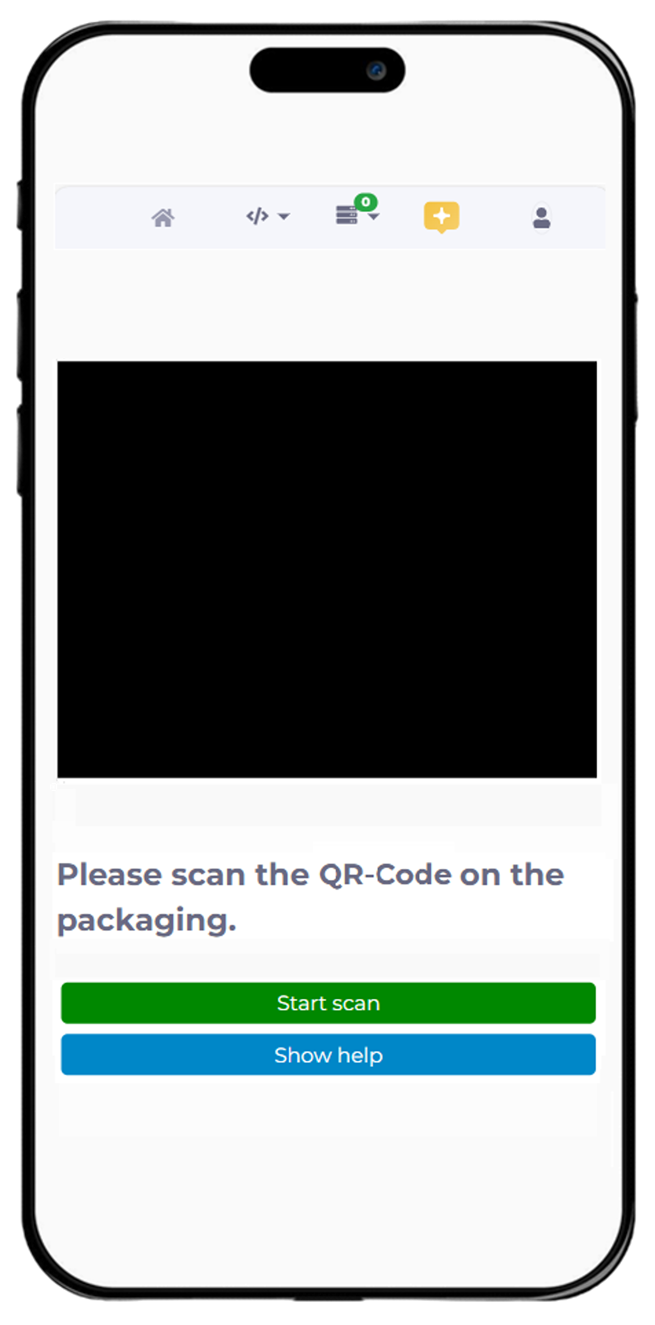
Implementation
Integration of QR codes in manufacturing
With manubes, you can integrate QR code scanning into your own applications to make production processes simpler, more efficient, and more secure.
- Verify materials with a quick scan to avoid costly mix-ups.
- Scan QR codes at workstations to instantly access the right dashboards and overviews.
- Provide maintenance-related information by placing QR codes on machines.
- Optimize internal logistics by marking pallets, containers, or storage locations and linking them to software systems.


Optimize your production with manubes
manubes offers a central platform for production data management, data visualization and workflow-based process automation.
Manufacturers gain access to a variety of innovative tools in order to quickly develop their own applications – tailored to their requirements.
Try manubes for free
Test the different manubes features in your personal cloud environment.
